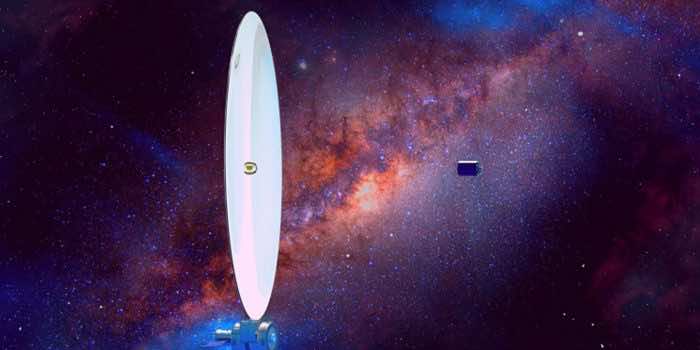An experiment stowed aboard the forthcoming Axiom-1 mission bound for the International Space Station (ISS) is ready to evaluate the basics of constructing a space telescope that uses a liquid mirror. The behavior of fluids in space multiplies the size of telescopes 10, or even 100-fold.
It can be a giant leap for astronomy.
Every liquid possesses an elastic force of cohesion that can create the placid surface with which we’re familiar. This is how some insects can glide effortlessly across liquid surfaces, and it’s also why raindrops have a specific shape.
Principle Investigator Edward Balaban of NASA’s Fluidic Telescope Experiment (FLUTE) at Ames Research Center, California, joined with scientists at the agency’s Goddard Space Flight Center in Greenbelt, Maryland, in addition to the Palestinian Institute of Technology’s Technion to evaluate whether high-precision lenses and mirrors could be constructed via liquids.
“We thought, why not take advantage of the way liquids naturally behave in microgravity and apply it to the construction of large-scale telescopes or space-manufactured optical components that can have all kinds of uses,” explained Balaban in the NASA blog post.
“In microgravity, liquids take on shapes that are useful for making lenses and mirrors, so if we make them in space, they could be used to build telescopes that are dramatically bigger than was previously thought possible.”
“The trick is to make sure that the water has the exact same density as the polymer we’re injecting so that the forces of buoyancy precisely oppose gravitational forces to simulate the conditions of weightlessness,” added Frumkin.

Two zero-gravity parabolic flights provided the opportunity to test the team’s ideas in December 2021. The tests resulted in 50 iterations of 15- to 20-second periods of microgravity.
This was enough time for the teams to create liquid lenses, and “sure enough, in a few seconds we were able to create a free-standing liquid lens — until the plane lifted upwards again and gravity kicked in,” and synthetic oils were used for a liquid began to “ooze out,” said Bercovici.


